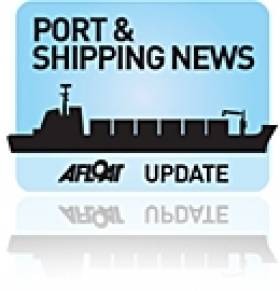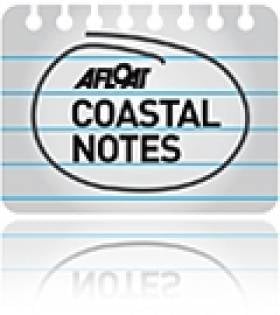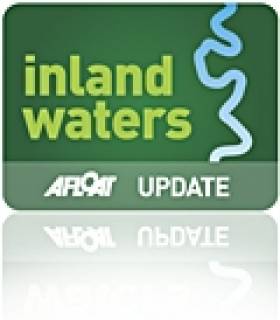Displaying items by tag: dredge
The Department of Agriculture, Food and the Marine (DAFM), the harbour authority for Howth Harbour Fishery Centre in North County Dublin, is proposing to dredge seabed material from within the harbour to provide better water access to the fishing, leisure, and RNLI craft using the harbour.
Silting of the harbour and the subsequent dredging conversation has been an ever-present challenge for the harbour over the past two decades.
It is proposed to reuse the material to create an area for the public realm on the west side of the West Pier.
The volume of material to be removed is approximately 240,000m3, and the area to be created is approximately 4.8ha.
The reclaimed area would be used for public realm, water access for leisure users, car parking and hard standing areas that can be used for storage areas for existing harbour leisure users and the harbour authority. In the future, some of the area created may be converted to light industrial/ commercial use to support harbour operations. Such future use is not part of the proposed development being considered at present.
 Howth Harbour in North County Dublin
Howth Harbour in North County Dublin
The harbour was upgraded in the 1980s when the Syncrolift, the berthage face along the west pier, the present middle pier, the internal breakwater, and the marina area were constructed.
Enhancement of water depths within the harbour area is now required to maintain safe access to the harbour during any tide state. This is necessary because of increased fishing vessel sizes, siltation, and a desire to improve the usable water area. Lack of sufficient water depths due to siltation in the vicinity of the public and RNLI slipways is resulting in restricted access to the water for the public and RNLI rescue craft at low tide.
To this end, the DAFM are preparing a planning application, EIAR and NIS for a proposed dredging and reclamation project at Howth Harbour FHC.
While a town hall public consultation exercise would normally be undertaken to inform the preparation of a planning application with an EIAR, because of COVID restrictions, this public consultation exercise is being undertaken virtually.
 Details of the West Pier's proposed design, utilising the spoil from the dredging
Details of the West Pier's proposed design, utilising the spoil from the dredging
Proposed Howth Harbour Development
The proposed development will be the subject of a planning application by the Department of Agriculture, Food and the Marine and relates to the following main elements:
- Dredging of the harbour and reclamation of land on the west side of the West Pier using treated dredge material;
- The dredge material will be treated using soil stabilisation techniques prior to placement in the reclamation area. This will improve the strength of soil, bind in contaminants and minimise the potential for leachate;
- Coastal protection works to the perimeter of the reclaimed area;
- Landscaping on the reclaimed area and construction of footways, roadways and parking areas;
- Construction of viewing points and a slipway for access to the water;
- Construction of storage areas for harbour activities;
- Provision of necessary services.
If you would like to submit your comments or feedback, you can do so at:
Comments must be submitted before 2300hrs (11pm) Friday 09 April 2021
Download the full proposal below (7mb)
Rosslare Europort To Dredge Sand Build-Up from Storms
#portsandshipping – Dredging at the breakwater of Rosslare Europort of sand which built up in the storms of January and February this year is to begin during week commencing 30th November.
The movement of sand which took place along the breakwater over two weeks of severe storms in late January and early February 2014 was estimated up to 100,000 m3, unprecedented given the typical annual average levels of 11,000m3. As a result, Berth 4 has been out of use since then, and there have also been some navigation restrictions.
Iarnród Éireann, the Port Authority for Rosslare Europort, applied for and has now received a foreshore licence and a dredging licence to proceed with the dredging works to restore the Europort to normal working conditions.
The sand removed from the Europort by its contractor will be placed just outside low water at Rosslare Strand, and it is expected to be carried up onto the beach there to replenish it. This is a repetition of the strategy successfully followed at the last dredging in 2011, and follows consultation with the Environmental Protection Agency and the Department of the Environment and licence approval.
Iarnród Éireann has allocated funding of €1.4m for this project, and the dredging work is expected to take approximately three weeks. Normal port operations will continue throughout these works.
#dunmoreeast – The Minister for Agriculture, Food and the Marine, Simon Coveney TD, today announced details of a €4m dredging project at Dunmore East Fishery Harbour Centre on the occasion of the official opening of a €450,000 renovation of the Marine Leisure Area at the western end of the harbour.
At the opening, the Minister said "I am delighted to officially open this. The completion of this project adds greatly to the Harbour for marine activities generally. This end of the Harbour was in need of revamping for some time, and I prioritised works to make it a fit for purpose amenity which will benefit and promote the marine leisure industry in this area".
Leisure activity in Dunmore East has been increasing substantially in recent years with 180 visiting yachts from all over Ireland and abroad using the harbour in 2013, more than a threefold increase on previous years. Cruise line passengers nearly doubled in 2013 to 9,500 and with the newly renovated slipway it is expected that usage by members of the public will double in 2014 from around 600 in 2013.
The €450,000 renovation included extending the existing slipway, widening it from five to twelve metres, resurfacing and generally improving vehicle and pedestrian access, the development of a promenade with street lighting, improved access to the beach, and a rock armour embankment to protect the development from severe weather conditions.
Commenting on the works the Minister said "This is an excellent piece of infrastructure and is now a top class amenity which will lend itself to the further development of the leisure industry in Dunmore East, and the spin off that will have for tourism and jobs locally".
Announcing the €4m dredging project for Dunmore East to resolve the impacts of years of siltation in the harbour, which has restricted vessel traffic and made manoeuvrability and fish landings problematic for fishermen the Minister said "This significant investment in Dunmore East from the 2014 Fishery Harbour Capital Programme is an indication of this Government's commitment to the fishing industry in the South East. When complete, not only will the harbour be more accessible to larger vessels, landing times and management will be much improved as will the usability of the syncrolift".
Latest figures indicate that the value and volume of fish landings in Dunmore East has been on the increase for a number of years. Between 2010 and 2013 landings increased by 40% from 8,387 tonnes to an estimated 11,718 tonnes. The equivalent value of these landings went from €13.7m in 2010 to an estimated €17.5m in 2013 an increase of 28%.
The Minister went on to say "Taking account of the increased level of fish landings I am conscious of the need to dovetail the much needed dredging works with the seasonal work patterns of the fishing industry to cause as little disruption as possible. With that in mind every effort will be made to ensure that the works will be completed in advance of the important herring fishery later in the year".
Groundwork for the project is well advanced; a public procurement exercise will be initiated in May, with a view to awarding the contract in time for an August commencement date.
Concluding the Minister said "The development and upkeep of Dunmore East as a state of the art Fishery Harbour Centre, supporting a broad range of marine related activities is and will remain an ongoing process. These two major projects and the recent installation of floating pontoons within the Harbour are part of a long term strategy to deliver on the potential of Dunmore East for job creation for the fishing industry and as a marine leisure and tourist destination".
Barrow Line Closes to Facilitate Dredging
Waterways Ireland have advised all owners and masters of inland waterways vessels that the Barrow Line of the Grand Canal between the 21st Lock at Ballyteague and the 22nd Lock at Glenaree, will be closed to navigation from 16th Nov 2010 until 17th Mar 2011 to facilitate Waterways Ireland's winter dredging programme.































































